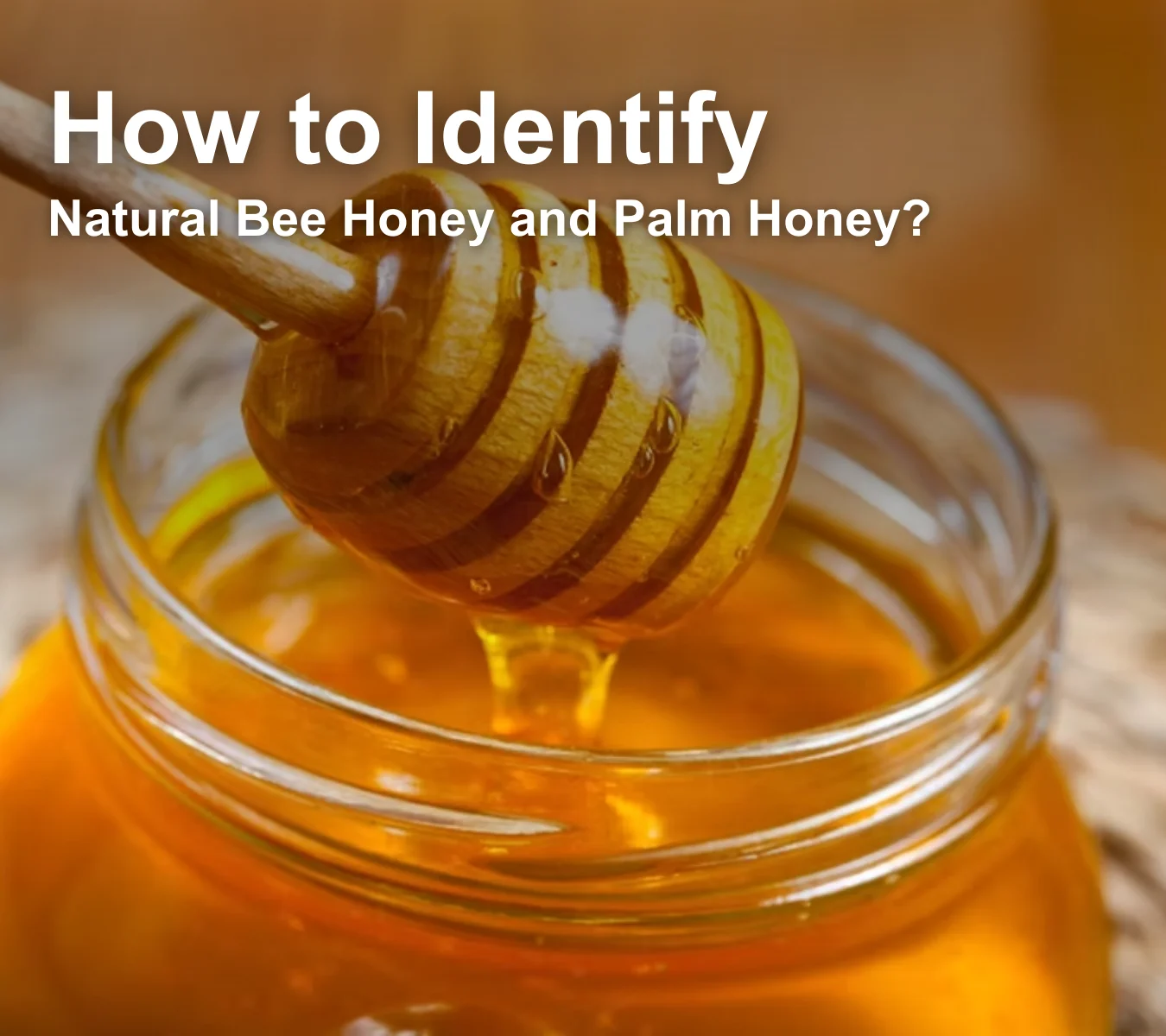How to Identify Natural Bee Honey and Palm Honey
Introduction
Honey has been a prized natural sweetener for centuries, but with the rise of adulterated and fake honey in the market, knowing how to identify pure honey is crucial. Two popular types of natural honey are Bee Honey and Palm Honey (also known as Kithul Pani in Sri Lanka). Each has unique properties and benefits, making it essential to distinguish the real from the fake.
In this guide, we’ll explore various methods—including kitchen tests, visual inspection, and scientific techniques—to help you verify the authenticity of these honeys.
Identifying Natural Bee Honey 🐝
1️⃣ Visual and Texture Test
- Color & Clarity: Pure bee honey varies from golden amber to dark brown, depending on the floral source. It is not completely transparent.
- Thickness & Consistency: Natural honey is thick and flows in a smooth, continuous stream when poured. Fake honey is often watery and drips instead of flowing smoothly.
- Crystallization: Raw honey tends to crystallize over time (forming sugar granules), whereas fake honey remains liquid due to additives like glucose syrup.
2️⃣ Water Test 💧
- Take a glass of water and drop a teaspoon of honey into it.
- Pure honey will settle at the bottom without dissolving immediately.
- Fake honey will start dissolving quickly or spread in the water.
3️⃣ Thumb Test
- Place a drop of honey on your thumb and tilt your hand.
- Natural honey will stay in place and not spread quickly.
- Adulterated honey will run off your thumb due to added liquids.
4️⃣ Flame Test 🔥 (For safety, handle with care)
- Dip a cotton wick or matchstick into honey and try to light it.
- Pure honey will ignite easily as it has low moisture.
- Fake honey will not burn due to its high water content.
5️⃣ Paper Towel Test
- Drop a little honey on a paper towel.
- Real honey will not absorb quickly or leave a wet mark.
- Fake honey will seep into the paper, showing its high water content.
6️⃣ Taste & Aroma
- Pure honey has a rich floral aroma and complex sweetness.
- Fake honey often tastes overly sweet and lacks depth in flavor.
7️⃣ Vinegar Test 🧪
- Mix a tablespoon of honey with a few drops of vinegar.
- If it foams or bubbles, it may contain additives like chalk powder.
Benefits of Bee Honey 🐝💛
Bee honey is more than just a sweetener. It has numerous health benefits, including:
- Rich in Antioxidants: Bee honey contains antioxidants that help combat oxidative stress and inflammation.
- Boosts Immunity: It has antibacterial and antimicrobial properties that can boost the immune system.
- Supports Digestive Health: Raw honey can help soothe the digestive system, alleviating issues like indigestion.
- Wound Healing: Honey, especially Manuka honey, has been used for its wound-healing properties due to its antibacterial qualities.
- Skin Care: Honey is a natural humectant, making it ideal for moisturizing and soothing dry skin.
Identifying Natural Palm Honey 🌿 (Palm Honey)
Palm honey is derived from the Palm tree (Caryota urens), mainly found in Sri Lanka and India. It is naturally dark brown with a caramel-like consistency and is highly valued as a natural sweetener.
1️⃣ Color and Consistency
- Natural Palm honey is dark brown to deep amber.
- It has a thick, syrupy texture but flows more freely than bee honey.
- Fake Palm honey is often too watery or sticky.
2️⃣ Taste and Aroma
- Real Palm honey has a rich caramel-like sweetness with a subtle smoky or nutty aftertaste.
- Fake versions taste overly sweet and artificial.
3️⃣ Refrigeration Test ❄️
- Place Palm honey in the fridge for a few hours.
- Pure Palm honey will not harden completely.
- Fake honey may turn excessively thick or separate into layers.
4️⃣ Boiling Test 🔥
- Heat a teaspoon of Palm honey in a pan.
- Real Palm honey caramelizes and darkens slightly but does not become foamy.
- Fake honey may foam, bubble excessively, or burn too quickly due to added sugar.
5️⃣ Kitchen Water Test
- Add Palm honey to a glass of water.
- Pure honey will settle at the bottom and mix slowly.
- Fake honey dissolves rapidly or leaves sticky residue.
Benefits of Palm Honey 🌿🍯
Palm honey, much like bee honey, offers a wide range of health benefits:
- Rich in Minerals: It contains important minerals like calcium, magnesium, and potassium that contribute to overall health.
- Digestive Aid: Palm honey helps soothe the stomach lining and can be used to alleviate digestive issues.
- Antioxidants and Anti-inflammatory: Like bee honey, it is rich in antioxidants and has anti-inflammatory properties.
- Supports Skin Health: The high mineral content helps maintain healthy, glowing skin and aids in healing skin conditions.
- Energy Boost: Palm honey provides a slow, steady source of energy due to its natural sugars, which help boost stamina and vitality.
Common Differences Between Bee Honey and Palm Honey
| Feature | Bee Honey | Palm Honey |
|---|---|---|
| Source | Bee nectar from flowers | Sap of the Palm tree |
| Color | Golden amber to dark brown | Dark brown to blackish |
| Texture | Thick, can crystallize | Syrupy, never crystallizes |
| Taste | Floral, mildly sweet | Caramel-like, rich and smoky |
| Crystallization | Yes, over time | No, remains liquid |
| Best Uses | Tea, skincare, medicinal | Desserts, pancakes, traditional recipes |
With so many adulterated honey products on the market, it’s essential to know how to identify real honey. Whether you’re buying bee honey or Palm honey, using these tests at home will help you ensure authenticity.
👉 Try these tests today and share your results! Let us know if you have any other methods to check the purity of honey. 🍯🌿
